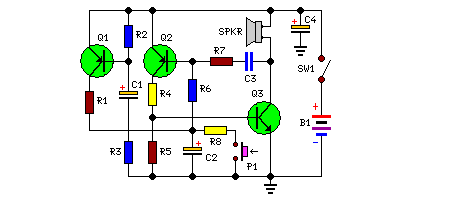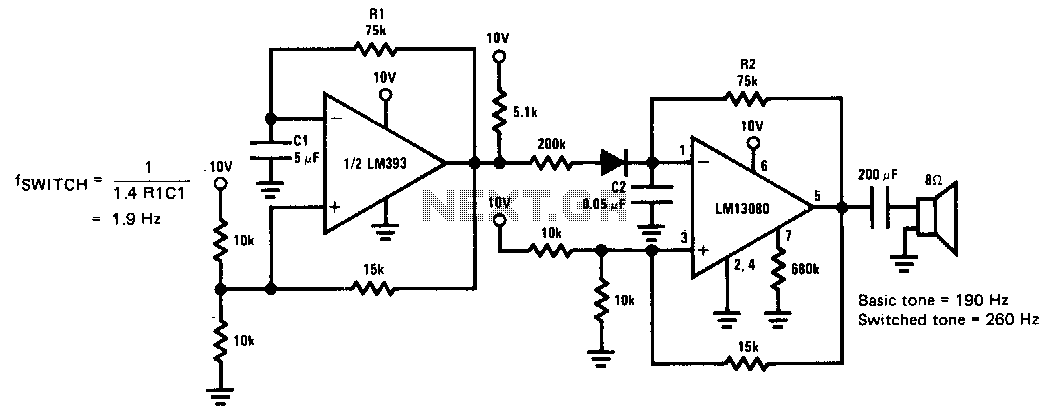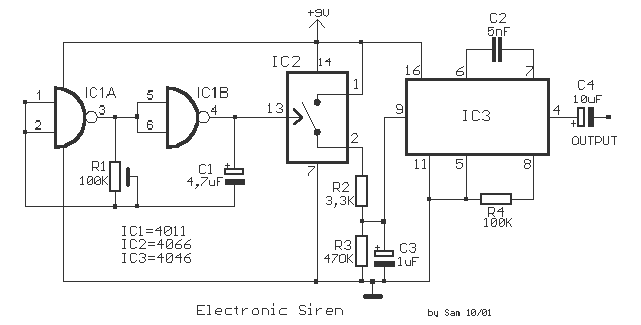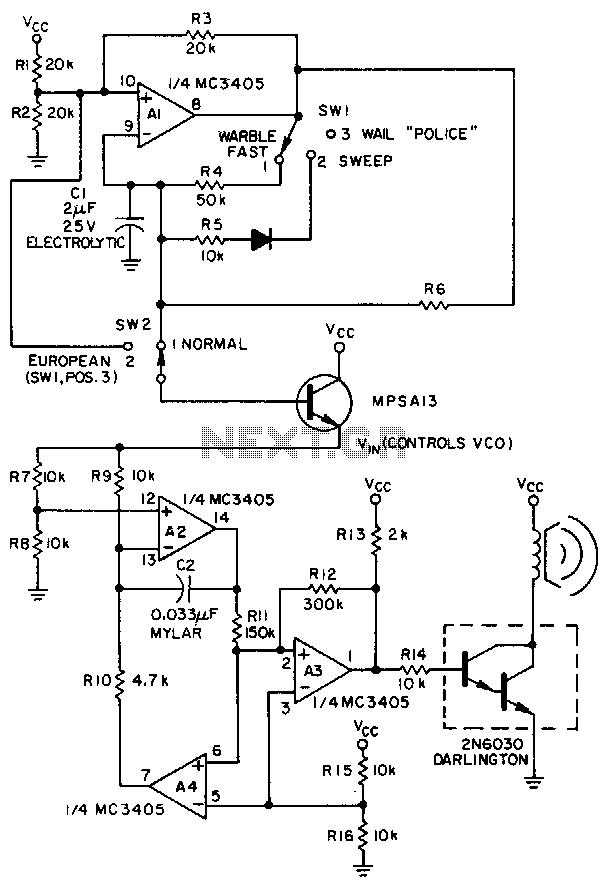
when the siren sounds
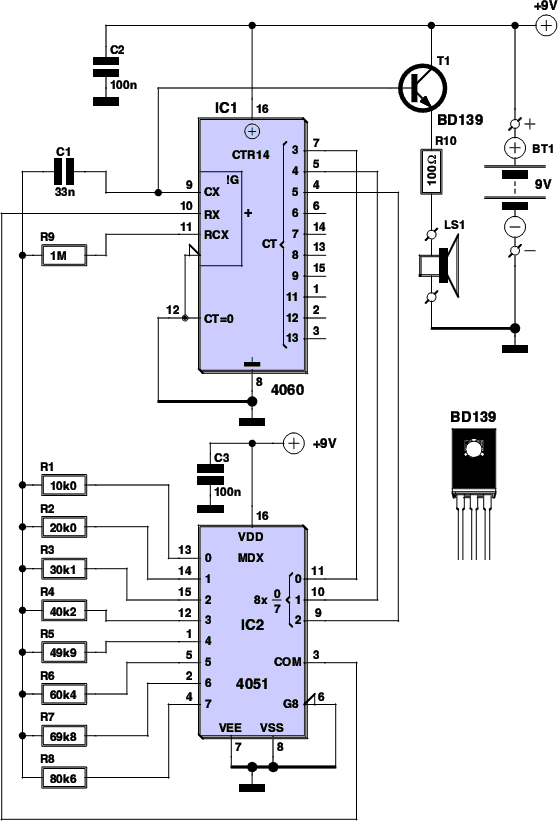
In Greek mythology, a siren was a demonic being that was half bird and half woman. This concept was later transformed in art into a mermaid, which is a combination of a fish and a woman. Mechanical and electromechanical versions were invented subsequently, with electronic models developed in the last century. Sirens are known for their ability to produce sounds that attract attention. Except for the flesh-and-blood models, they are used to warn people in specific areas of impending danger. The electronic versions are the most suitable for DIY construction.
Electronic sirens are devices designed to emit loud, attention-grabbing sounds, commonly used in warning systems, alarms, and alerts. The core functionality of an electronic siren involves generating sound waves at specific frequencies to ensure maximum audibility over a distance. Typically, these devices consist of a sound generation circuit, an amplifier, and a loudspeaker.
The sound generation circuit can employ various methods, including oscillators that produce square or sine waves, or digital sound synthesis techniques. The choice of method often affects the type of sound produced, which can range from a continuous tone to a modulated alert signal. The amplifier is crucial for boosting the signal strength from the sound generation circuit to drive the loudspeaker effectively.
Loudspeakers used in sirens are designed to handle high power and produce a significant sound output. Common configurations include cone speakers or horn speakers, which can project sound over larger distances. The electronic siren may also include additional features such as variable pitch or volume control, enabling customization of the alert sound based on specific requirements or environments.
For DIY enthusiasts, constructing an electronic siren can be achieved using readily available components such as microcontrollers, which can programmatically control the sound output, or simple integrated circuits designed for audio applications. Power supply considerations are also important, as the siren must be able to operate effectively on the intended voltage and current levels, which can be sourced from batteries or mains power.
In summary, electronic sirens serve a critical role in safety and alert systems, leveraging advancements in technology to produce reliable and effective warning signals. Their construction and design can be tailored to meet various applications, making them accessible for both professional use and DIY projects.In Greek mythology, a siren was a demonic being (half bird, half woman). Later on this idea was transformed in art into a mermaid: a combination of a fish and a woman. Mechanical and electromechanical versions were invented even later, and electronic models were developed in the last century. Sirens are characterized by their ability to produce sounds that attract attention. With the exception of the flesh-and-blood models, they are thus used to warn people in a particular area of impending danger.
The electronic versions are the most suitable for DIY construction.. 🔗 External reference
Electronic sirens are devices designed to emit loud, attention-grabbing sounds, commonly used in warning systems, alarms, and alerts. The core functionality of an electronic siren involves generating sound waves at specific frequencies to ensure maximum audibility over a distance. Typically, these devices consist of a sound generation circuit, an amplifier, and a loudspeaker.
The sound generation circuit can employ various methods, including oscillators that produce square or sine waves, or digital sound synthesis techniques. The choice of method often affects the type of sound produced, which can range from a continuous tone to a modulated alert signal. The amplifier is crucial for boosting the signal strength from the sound generation circuit to drive the loudspeaker effectively.
Loudspeakers used in sirens are designed to handle high power and produce a significant sound output. Common configurations include cone speakers or horn speakers, which can project sound over larger distances. The electronic siren may also include additional features such as variable pitch or volume control, enabling customization of the alert sound based on specific requirements or environments.
For DIY enthusiasts, constructing an electronic siren can be achieved using readily available components such as microcontrollers, which can programmatically control the sound output, or simple integrated circuits designed for audio applications. Power supply considerations are also important, as the siren must be able to operate effectively on the intended voltage and current levels, which can be sourced from batteries or mains power.
In summary, electronic sirens serve a critical role in safety and alert systems, leveraging advancements in technology to produce reliable and effective warning signals. Their construction and design can be tailored to meet various applications, making them accessible for both professional use and DIY projects.In Greek mythology, a siren was a demonic being (half bird, half woman). Later on this idea was transformed in art into a mermaid: a combination of a fish and a woman. Mechanical and electromechanical versions were invented even later, and electronic models were developed in the last century. Sirens are characterized by their ability to produce sounds that attract attention. With the exception of the flesh-and-blood models, they are thus used to warn people in a particular area of impending danger.
The electronic versions are the most suitable for DIY construction.. 🔗 External reference
